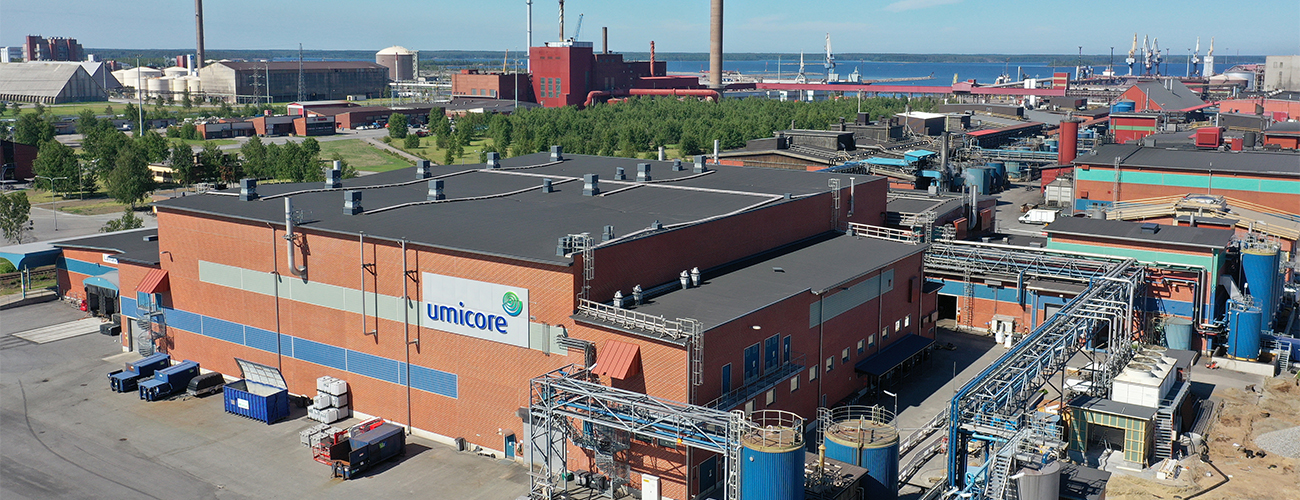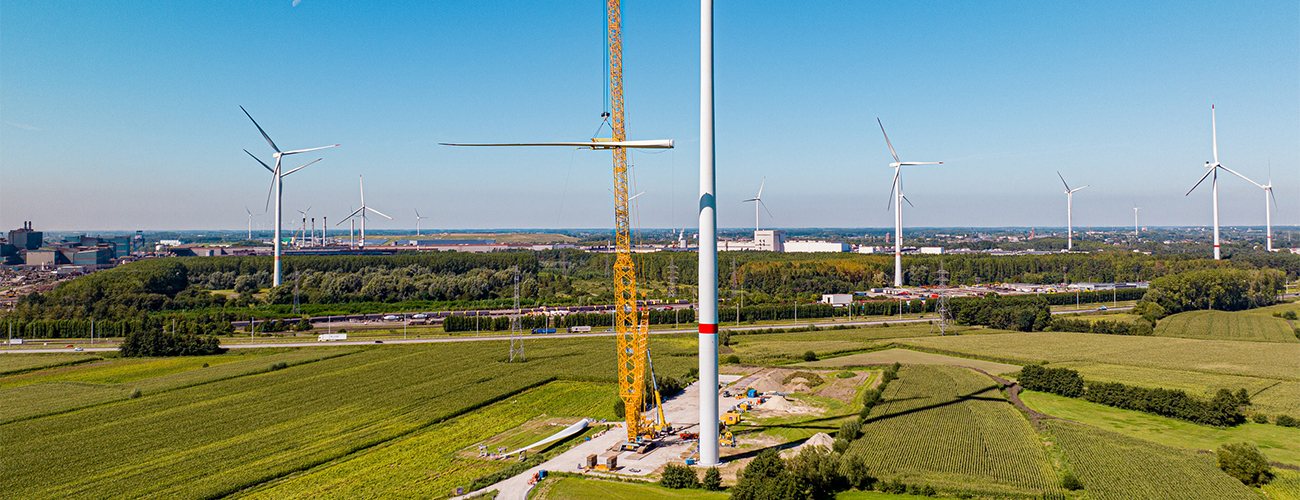The greenest energy is the energy you don't use

As part of striving to be a sustainability champion under our 2030 RISE Strategy, our Let’s Go for Zero ambitions aim to achieve Net Zero Scopes 1 and 2 emissions by 2035. To learn more about how we plan to get there, we meet two colleagues – Farah Ad’Oul and Nele S’heeren – who are heavily involved in our current and future decarbonization
efforts.
"The concept of sustainability is deeply embedded in our company. Our colleagues around the world are ready and willing to do their part in reaching our goals."
Nele S’heeren, Project Manager Energy
Umicore’s work to reduce our Scopes 1 & 2 greenhouse gas (GHG) emissions can be divided into three different levers. The first is to avoid emissions, focusing especially on energy and heat efficiency, process innovation and carbon-neutral growth. The second involves replacing emissions, such as through bio-based fuels, using renewable electricity from onsite installations and with green Power Purchase Agreements (PPAs). And finally, we aim to capture the remaining emissions. Farah Ad’Oul, Program Lead Decarbonisation for Scope 1, and Nele S’heeren, Project Manager Energy, tell us more about Umicore’s efforts across these Scopes and levers.
Farah, what does “energy efficiency” mean in the context of Umicore’s decarbonization strategy?
“Simply put, our activities are greener the less energy they use. That’s why avoiding emissions is a top priority, making energy efficiency a key pillar for our decarbonization efforts. In 2023, we launched our Energy Efficiency Program, aimed at reducing our overall energy consumption. Through a series of pilots in France, China, South Korea and Finland, we have conducted energy audits of our sites to determine the most appropriate and effective energy-saving measures. “When it comes to replacing emissions, the focus is mainly on renewable electricity, which is also pertinent to our Scope 1 emissions, where the steps we take to decarbonize are often linked to electrifying our processes. In the shorter-term, upping our energy efficiency and share of renewable electricity will lay a strong foundation for us to hit our Let’s Go for Zero targets.”
Can you give a concrete example of an Energy Efficiency project at Umicore?
Farah: “Of course, one concrete example is our optimized heater operation in Kokkola, during ramp-up and cooling down phases. By fine-tuning this process, we’ve managed to achieve electricity savings equivalent to a reduction of 228 metric tons of CO₂ emissions. This is an example of how we can avoid emissions.”

So Scopes 1 and Scope 2 are tackled together, Nele?
“Yes. Scope 1 reductions typically involve large-scale changes in process or technology that requires a long-term mindset, and there’s more to investigate and consider compared to switching to renewable electricity, which we are actively doing. An electron produced by a windmill or solar panel is the same as any other, so our infrastructure can operate as before, making this a relatively easy win in that regard.
“There are a few avenues available to source renewable electricity. One is through Power Purchase Agreements (PPAs), which are typically long-term contracts with owners of renewable electricity assets. For example, we have onshore and offshore
wind PPAs in Belgium, Finland and Poland. In addition to these, there are also the measures we can take ourselves, such as installing solar photovoltaic (PV) panels.”
“Decarbonizing energy is a work in progress and a mission that is here to stay. Once we achieve zero Scope 2 emissions, for example, we will have to maintain this level. And since PPAs are fixed-term contracts, that means constantly reviewing and updating the agreements we have in place.”
Farah, what was the result of the pilot series you mentioned?
“Overall, the program illustrated the importance of energy efficiency very well: all four pilots found an energy saving
potential of 15% to 20%, contributing to our decarbonization efforts while saving costs. Feasibility studies are underway to assess this potential and implement the necessary changes.”
“In the shorter-term, upping our energy efficiency and share of renewable electricity will lay a strong foundation for us to hit our Let’s Go for Zero targets."
Farah Ad’Oul, Program Lead Decarbonisation
for Scope 1
Does “-decarbonizing” look different depending on the country/region?
Nele: “We see differences in the tracking instruments for Scope 2 reductions. In Europe and the US for example, there are clearly defined energy attribute certificates that help to prove that one megawatt hour of electricity comes from a certain source. These certificates vary in name depending on the region, but we prioritize high credibility and quality certificates that meet certain criteria and are issued near our operations. In other areas, the infrastructure and legal frameworks around renewables are still maturing, and changing quickly, making it trickier to have that same level of stability.”
“We also need to think about where it’s best to implement sustainability projects. It’s a perpetual balancing act in which several aspects such as impact, cost, opportunities and stability are considered.”
Farah, is there a similar logistical complexity to your Scope 1 emissions reduction work?
“When it comes to Scope 1, there’s also a question of suitability, which is to say, finding the right solution, at the right place, at the right time, with an interesting carbon profile (for the right cost of course!). Our plant in Markham, Canada, for example, is located near a biogas and renewable energy provider, the conditions aligned to make the switch to biogas – something we achieved in 2023. Whereas in a country like Belgium, there aren’t any biogas certificates available. Even if we turned to neighbouring countries for supply, uncertainty remains about the ‘how much we can obtain’ and ‘how much our sites will need’.”
Looking to the future, spatial constraints also emerge as a critical consideration. The challenge of implementing large-scale decarbonization technologies, such as large batteries or even carbon capture units when they become mature technologies, within sites that may lack the requisite space today is something I’m already thinking about.”

Farah, energy efficiency seems straightforward, are there any challenges?
“Energy efficiency entails more than just implementing immediate solutions like transitioning to LED lighting or adjusting building temperatures. Coordinating efforts across a spectrum of facilities, each with its distinct operational requirements, demands a customized approach to yield optimal results. In certain business units, the challenge is compounded by standardized
equipment settings that aren’t easily adjustable for improved efficiencies. To overcome this hurdle, we must explore alternative strategies, such as optimizing workflow processes, deploying advanced monitoring systems, or investing in innovative technologies.”
Given all this complexity, how do you make it happen?
Nele: “We don’t do it alone! The concept of sustainability is deeply embedded in our company. Our colleagues around the world are ready and willing to do their part in reaching our goals and there are initiatives to further promote Environmental, Social and Corporate Governance (ESG) topics. As part of our ESG Academy, I gave two talks last year on renewable electricity, specifically on our recent PPAs, so that more colleagues understand the progress we’re making, how it fits into our strategy and how we can work together.”
